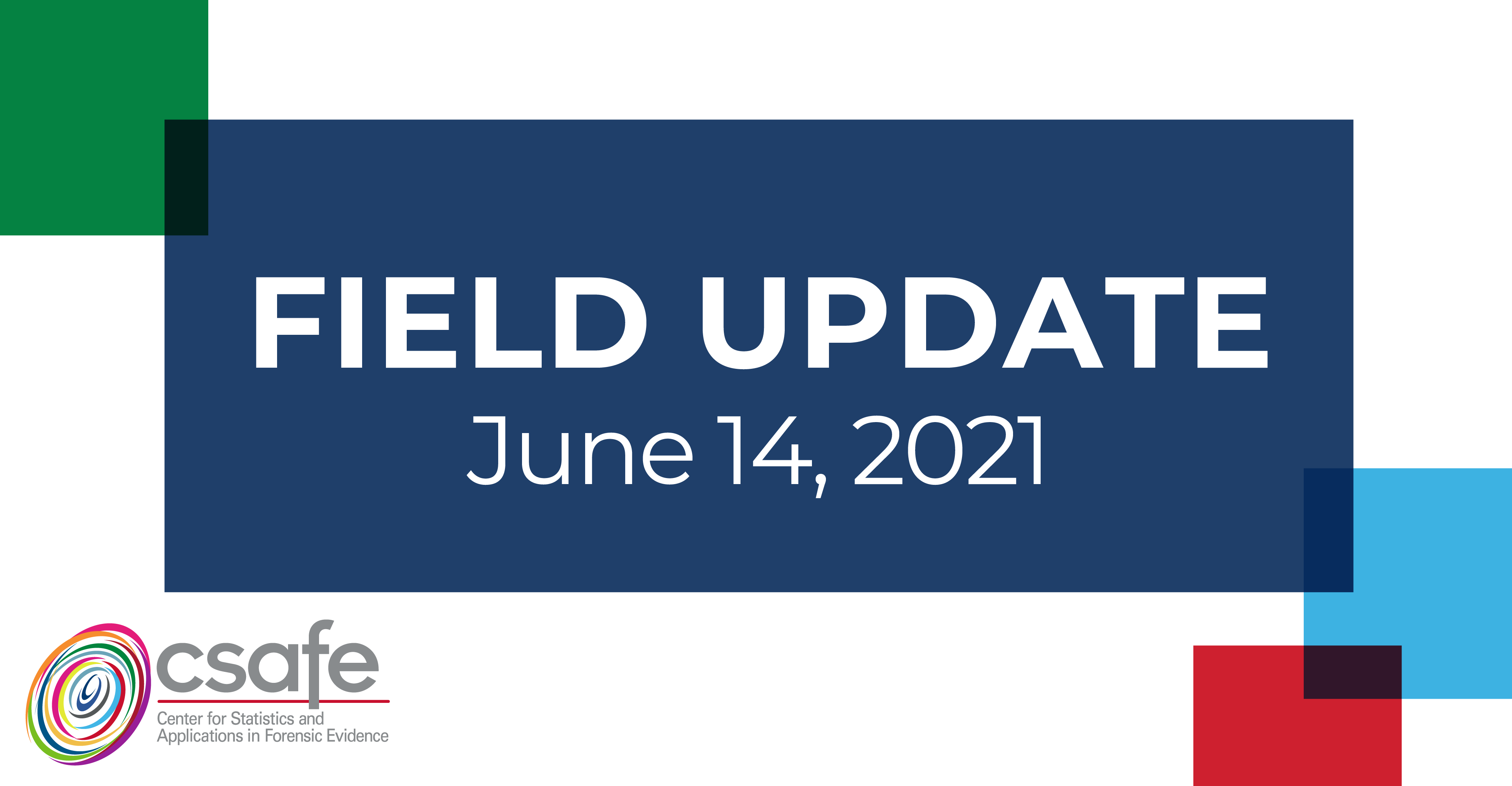The 2021 Field Update was held June 14, 2021, and served as the closing to the first year of CSAFE 2.0.
CSAFE brought together researchers, forensic science partners and interested community members to highlight the organization’s achievements, identify areas for collaboration, and discuss goals for the future. It was an opportunity to connect with innovative experts in statistical foundations, pattern and digital evidence, and training and education to learn from each other and discuss potential collaborations.
The available insights, presentation slides, and recordings of the research updates are available below. All videos, along with other CSAFE webinars, can be viewed on the CSAFE YouTube channel.
Session 1: Insights from the Inside
Implementing Blind Proficiency Testing in Forensic Laboratories: Motivation, Obstacles, and Recommendations
Robin Mejia, Carnegie Mellon University
Judges and Forensic Science Education: A National Survey
Brandon Garrett, Duke University
Mt. Everest—We are Going to Lose Many: A Survey of Fingerprint Examiners’ Attitudes Towards Probabilistic Reporting
Simon Cole, University of California, Irvine
Treatment of Inconclusive Results in Error Rates of Firearms Studies
Heike Hofmann, Iowa State University
A Field Analysis of Laboratory Case Processing: Print Comparison and Examiner Conclusions
Brett Gardner, University of Virginia and Maddisen Neuman, Houston Forensic Science Center
Psychometric Analysis of Forensic Examiner Behavior
Amanda Luby, Swarthmore College
A Clustering Method for Graphical Handwriting Components and Statistical Writership Analysis
Alicia Carriquiry, Iowa State University
Statistical Methods for the Forensic Analysis of Geolocated Event Data
Padhraic Smyth, University of California, Irvine
EviHunter: An Android Application Forensic Artifacts Database
Yong Guan, Iowa State University
Session 2: What’s Next at CSAFE
Evaluating Foundational Validity of Toolmark Analysis
Maria Cuellar, University of Pennsylvania
Subclass Characterization and Analysis of Firearms
Keith Morris, West Virginia University
Statistical Methods for Bloodstain Pattern Analysis
Hal Stern, University of California, Irvine
Statistical Models for the Generation and Interpretation of Footwear Impression Evidence
Charless Fowlkes, University of California, Irvine
Session 3: Applying Algorithms to Forensic Science Analysis
Part 1: Discover algorithmic approaches currently being implemented in forensic science labs and disciplines.
Part 2: Consider the ethical implications of algorithms and when they should or should not be explored as an option.




